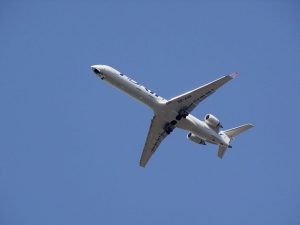
No airplane is immune to the effects of turbulence. If you’re a seasoned flyer, however, you may have noticed that bigger airplanes typically experience less turbulence. A Boeing 737, for instance, will almost certainly experience more turbulence than a smaller commuter airplane when flying through the same space. To better understand the connection between the size of an airplane and how turbulence affects it, keep reading.
What Is Turbulence?
Turbulence is defined as irregular airflow that changes an airplane’s motion. Just like the seas can have rough waves, the skies can have rough pockets of air. The air here may move fast and chaotic. When an airplane flies through this air, it may shake or even “fall” a short distance.
Common causes of turbulence include the following:
- Weather disturbances, including storm fronts and wind shears.
- Tall mountains, hills and even skyscrapers that disrupt the flow of air.
- Fast-moving air currents or “jet streams”
More Mass
Why do bigger airplanes experience less turbulence compared to smaller airplanes exactly? One of the reasons is mass. There’s a correlation between the size of an airplane and its mass. Bigger airplanes have more mass, which helps them move through pockets of turbulent air. Smaller airplanes, in comparison, have less mass, so they typically shake more when exposed to irregular airflow.
Longer Wingspan
Another reason bigger airplanes experience less turbulence is because of their wingspan. They have a longer wingspan than smaller airplanes. With their longer wingspan, they can absorb more turbulence to promote a smoother flight experience. When an airplane flies through a pocket of turbulent air, its wings will bend upward. This bending action will absorb some of the turbulence. Smaller airplanes typically have a shorter wing span, so they absorb less turbulence.
Higher Altitudes
Bigger airplanes often fly at higher altitudes than their smaller counterparts. Why does this matter? Well, there’s usually more turbulence at lower altitudes. Commercial airlines operate large airplanes that fly at higher altitudes where the air is calmer. As a result, they typically experience less turbulence.
In Conclusion
Many people assume that bigger airplanes are more impacted by turbulence, but this isn’t the case. It’s usually smaller airplanes, in fact, that shake the most when flying through turbulent air. There are several reasons for this. Smaller airplanes have less mass, a shorter wingspan, and they fly at lower altitudes. All of these factors result in more turbulence for smaller airplanes.



